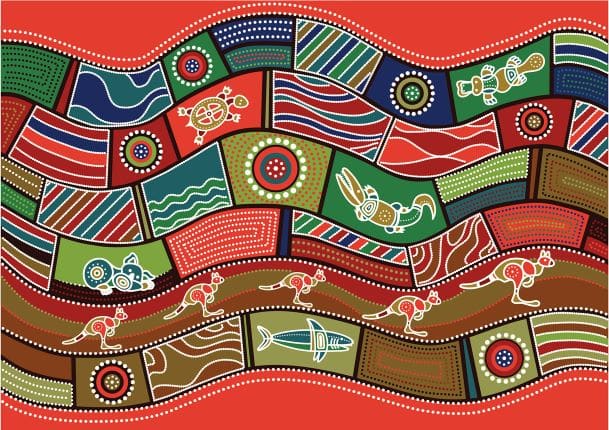Indigenous Australian art, culture and traditions are a unique and important part of the world’s cultural heritage. These ancient cultures have been present in Australia for over 60,000 years and continue to thrive today. They are an integral part of Australia’s history, identity and culture, and their contributions to the world are immeasurable.
Indigenous art is a vital and integral part of indigenous culture. It has been used to tell stories, record history, and communicate spiritual beliefs. The art is characterized by the use of symbols and patterns that are unique to each tribe or community, and it is often used to convey important cultural messages.
One of the most well-known forms of indigenous art is rock art, which can be found in many parts of Australia. These paintings and engravings depict animals, humans, and other significant cultural symbols, and they are believed to have been created for ceremonial or spiritual purposes. The rock art often tells stories of the Dreamtime, the Indigenous Australian understanding of the world’s creation. The Dreamtime stories are passed down through generations and tell of the spiritual beings and creatures that shaped the land, the laws and customs that govern society, and the spiritual beliefs of the Indigenous Australians.
Another important form of indigenous art is bark painting, which is often used to depict stories and spiritual beliefs. These paintings are created using natural pigments on the inner bark of trees, and they are an important part of many indigenous ceremonies. The bark painting is often used in ceremonial contexts and has a strong spiritual significance.
Indigenous culture is also rich in tradition and ceremony. Many indigenous communities continue to practice traditional customs, such as hunting and gathering, storytelling, and spiritual ceremonies. These customs are passed down from generation to generation and are an important part of maintaining cultural continuity and identity. The traditional customs and ceremonies are often deeply connected to the land and the environment and play a vital role in the spiritual beliefs of the Indigenous Australians.
Indigenous people also have a deep connection with the land, and this connection is reflected in their spiritual beliefs. Many indigenous communities have a strong belief in the spiritual power of the land and the animals that inhabit it, and this belief is reflected in their ceremonies and art. The land is considered sacred and is often depicted in the art and stories passed down through the generations.
Indigenous Australians have also been successful in preserving their language, which has played a major role in the preservation of their culture, customs, and traditions. Many indigenous languages have been lost over the years, but there are still over 100 indigenous languages spoken today. The preservation of these languages is important not only for the Indigenous Australians but also for the world as it helps us understand the ancient cultures and their connection to the land.
The Indigenous culture has also been passed down through storytelling, which has been a way of recording history, passing on knowledge, and maintaining cultural continuity. These stories often include important cultural messages and teachings, and they are an important part of many indigenous ceremonies. Storytelling has been used as a way to preserve the culture, customs, and traditions of the Indigenous Australians and is an integral part of their way of life.
Indigenous Australians have faced numerous challenges and injustices since the arrival of Europeans in 1788. The colonization of Australia led to the displacement of indigenous peoples from their traditional lands, the loss of their culture and way of life, and the forced removal of thousands of indigenous children from their families, a policy known as the “Stolen Generations.”
In recent years, there has been a growing recognition of the need to acknowledge and address the injustices faced by indigenous Australians. The Australian government has apologized for the policies of the past and has taken steps to address the ongoing issues faced by indigenous peoples.

